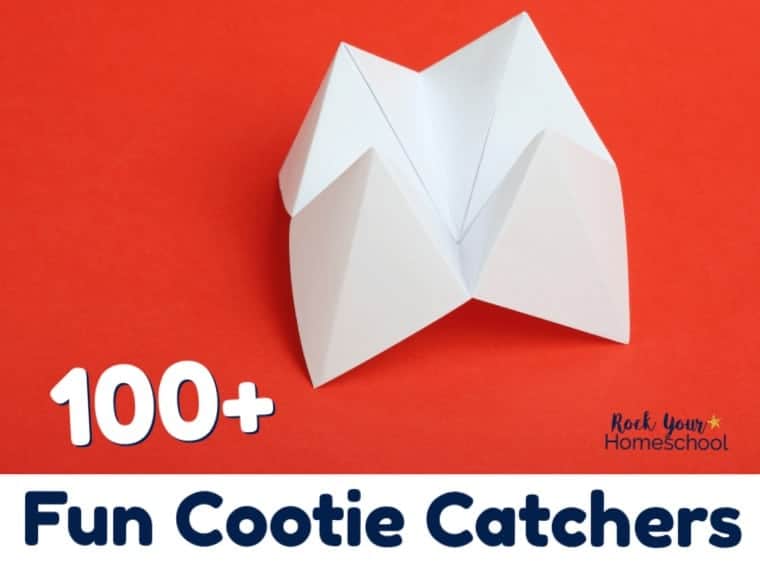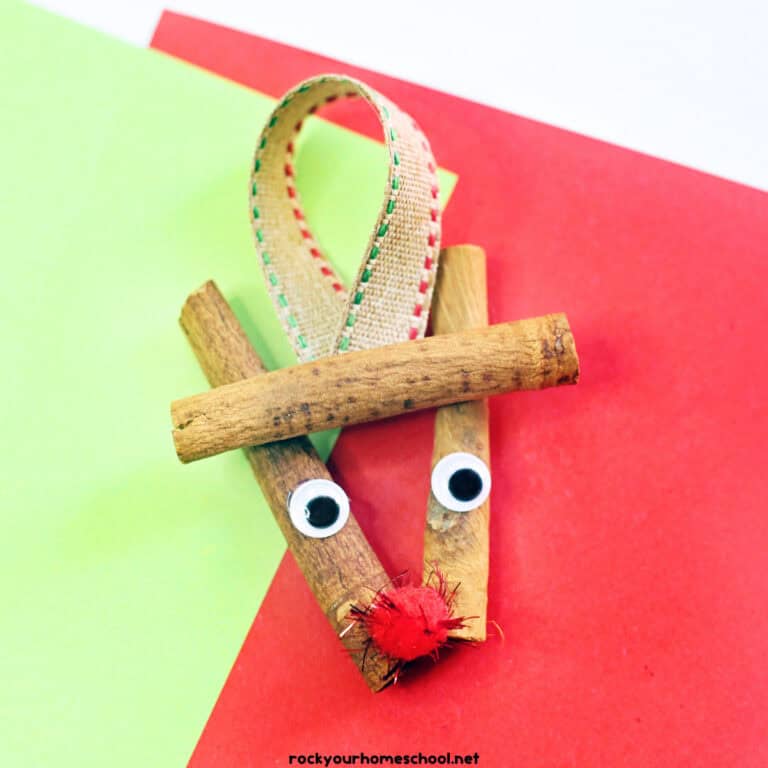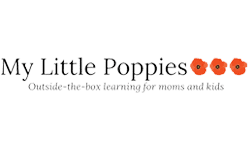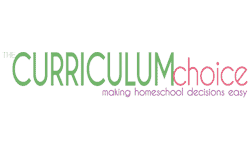The sooner you can introduce conservation for kids, the better!
Find out more about conservation and why it’s so important to help your kids get a better understanding of it.
Plus, get fantastic ideas and tips for how to teach conservation methods, as well as the benefits of learning about conservation.
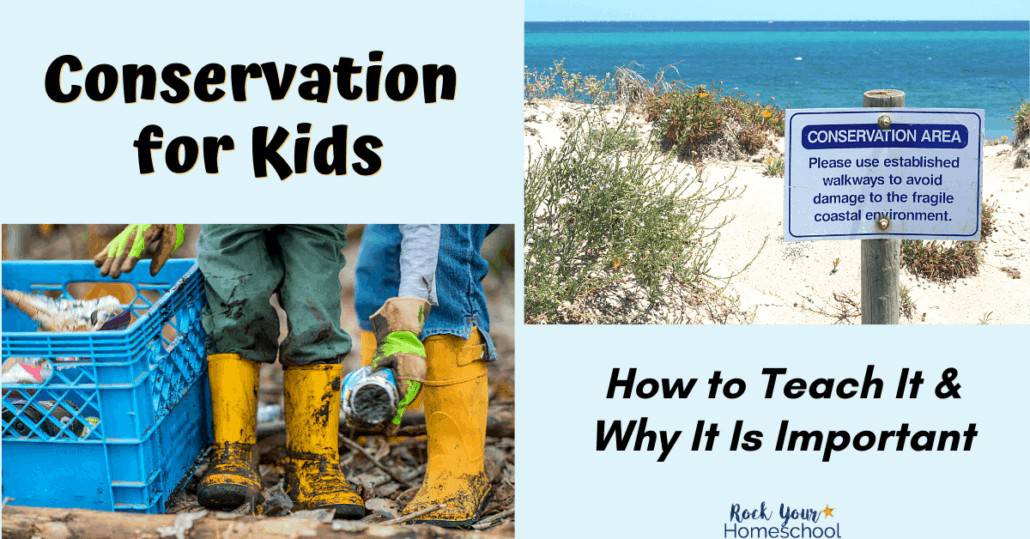
Why Conservation for Kids Is Essential
If you want to leave a better world for your children, you must first start by setting an example and leading them towards the changes we need to see for a better world.
At times, you may need to take a stand and make choices that help the Earth continue to thrive. As you make these choices, you learn AND model mindful behaviors to your kids.
Teaching your kids about conservation and its important role in the future of our world is an excellent step in the right direction.
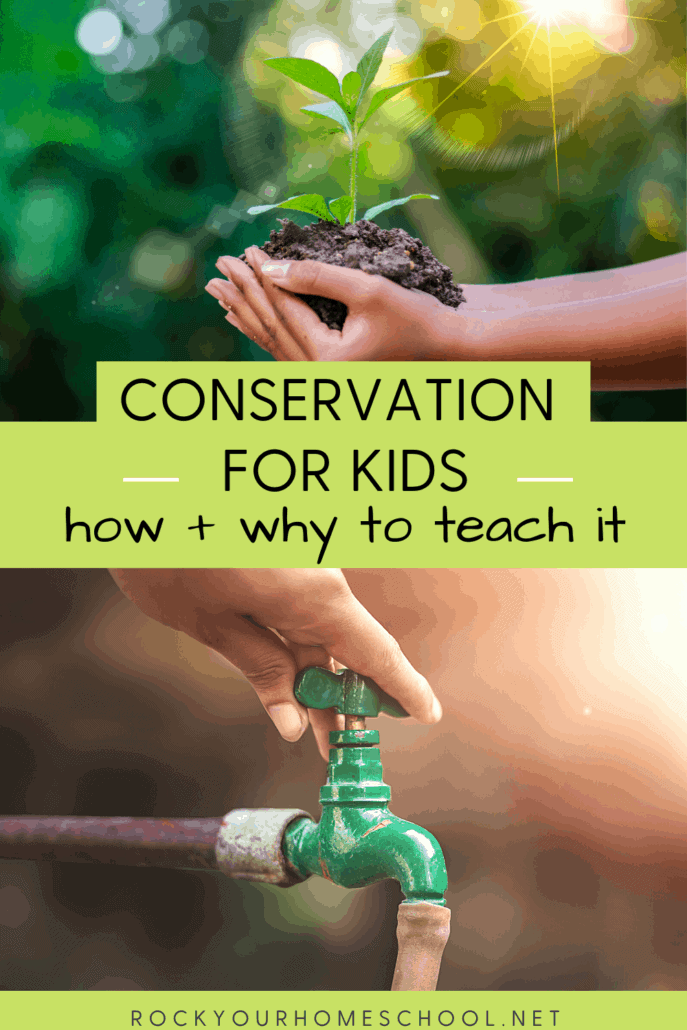
What is Conservation?
Conservation is the mindful use of our planet’s resources, as well as preventing waste as much as possible.
Conserving energy, water, and resources are significant steps that you can make to a better, healthier
world.
The Earth has a limited number of resources. If efforts aren’t made to use them wisely, there’s a strong chance of running out of those resources.
Conservation is all about helping to protect the environment and make those resources last as long as possible.
Conservation is also used to improve the protection of animals. An unfortunate number of animal species are threatened or endangered. Taking steps to protect and conserve these animal populations is a worthy cause that can lead to a better world. Each animal is part of our overall ecosystem and necessary for it to thrive for years to come.
Marine conservation is about protecting, maintaining, and encouraging the growth of aquatic wildlife. The protection and conservation of reefs, as well as the ridding of the ocean of plastics and other trash, are great examples of marine conservation.
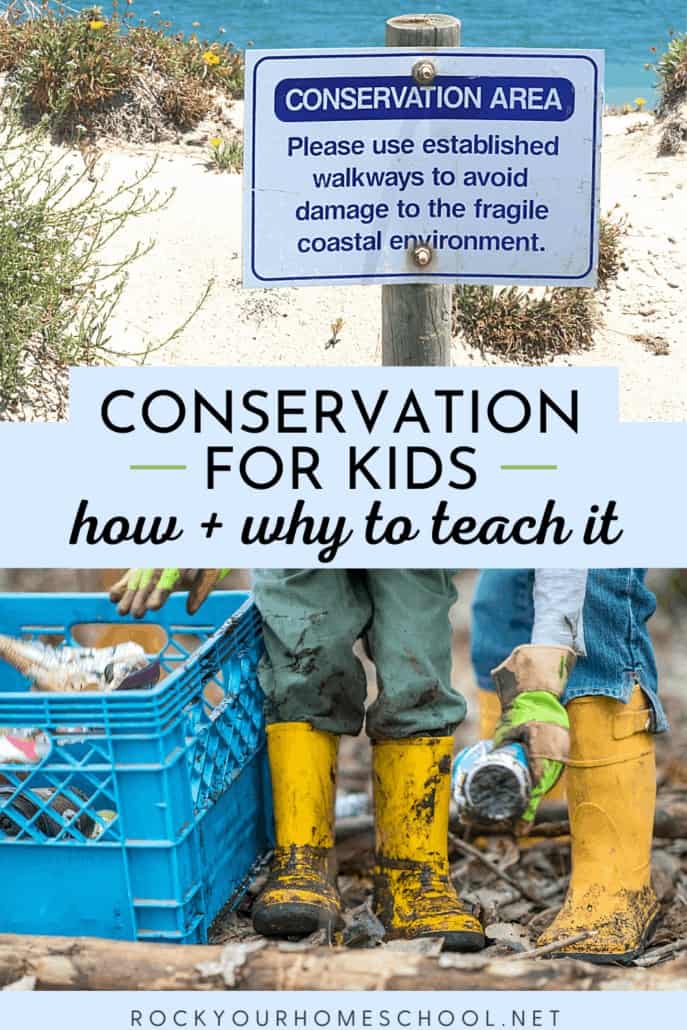
Benefits of Teaching Conservation for Kids
Children who learn about conservation and making better choices become more responsible citizens that think about both society and the environment.
Through exposure to experiences, resources, and conversations about conservation, kids become more aware of the world around them and the consequences of their actions.
As kids learn about conservation, they develop empathy and realize the value of caring for others and our planet. Children also develop a better appreciation of wildlife and other natural resources.
Addressing conservation issues with kids helps prepare these future members of society to lead more mindful and responsible lives.
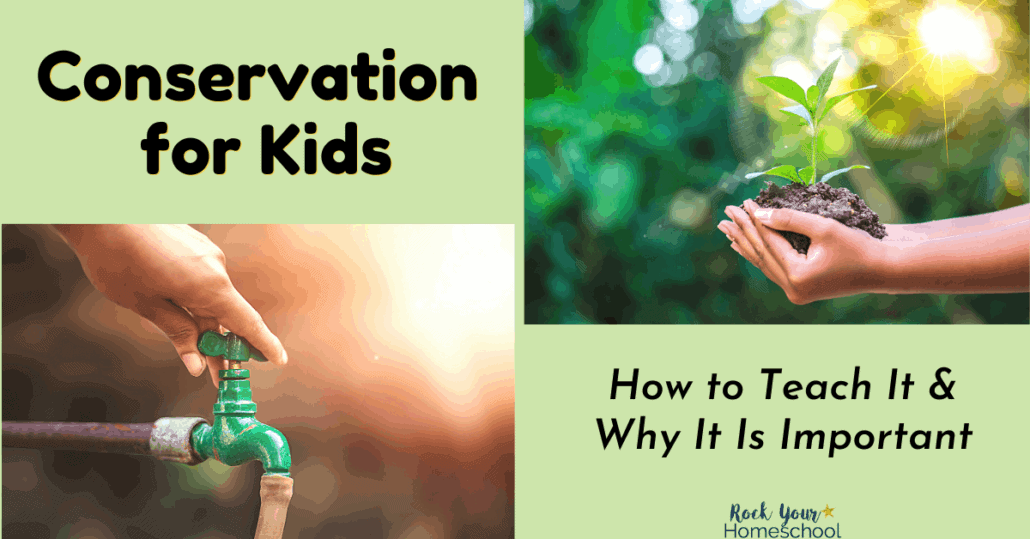
How to Teach Conservation for Kids
When teaching your child about conservation, it’s a good idea to start small.
Take some time to talk to your child about little things you do in your home each day to help conserve resources and protect the environment.
Point out simple choices, like turning off the water while brushing your teeth or choosing to bring your own bags to stores for groceries and other items. Throwing away trash at the park, playground, and yard are other simple ways to practice conservation. Although small, these simple actions go far in conserving resources.
Talk to your kids about ways you can all reduce waste in your home. Actively using your area’s recycling program is a fantastic start.
Another great idea is to have a no-waste kitchen by using reusable containers.
Shopping in bulk can also reduce packaging and the number of trips to the store.
Consider starting a compost bin. This activity is a great way to reduce your carbon imprint and teach your child
about the importance of caring for the soil and reducing waste in landfills.
While many things will break down quickly in your compost pile, those same items may take decades to break down in a landfill. Each thing you compost is one less food scrap, grass clipping, or piece of paper that lands at the dump.
Research climate change with your child. Discuss how your choices have an effect on the climate around us. Point out that even small changes we make every day can make an impact.
Small changes, like giving up plastic straws, don’t seem to make a big difference in your daily life. But, consider how much plastic is saved from landfills by reducing the amount of oil used to make plastics and preventing straws from working their way into the oceans.
Another amazing thing you can do is chat about endangered species around the world. Talk about ways you can help these creatures. My boys and I do this a lot! The two little boys (7 and 9) are obsessed with endangered animals and are always brainstorming ways to help 😊
A close-to-home example is to talk about how bees are endangered. Then, spend some time planting wildflower seeds to help feed the bees.
This simple step towards conservation will help your child understand the importance of fighting for wildlife and how even small actions made can have a big impact.
When Should You Teach Children About Conservation?
Any day of the year!
A great time to start is around Earth Day (April 22). You can use a fun unit study about Earth Day– its history and why it was started. There are so many amazing books and activities to make it a cool celebration and learning experience.
Arbor Day is another amazing time to introduce conservation topics to kids. You can find some wonderful ideas and resources (plus free coloring pages) here.
Conservation for kids can be such a fun and engaging part of your {homeschool} life.
Now that you’ve read through these tips and ideas, how will you weave conservation into learning at home? And what other suggestions do you have? Please share in the comments area below 🙂
